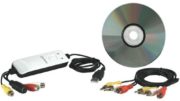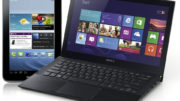Who remembers Windows 8? I do. One of my favorite articles from the first year I edited this blog talked about it. It was called “Windows 8: Day 1 fail?” and it’s still available if you want to read it. In this article I lambasted Windows 8 for taking away the things that made my Windows experience work. Windows 8 seemed less like a modern take on Windows and more like a betrayal of everything I’d learned about desktop operating systems since the late 1980s.
Microsoft listened. Windows 8 was the last “pay-to-upgrade” version of Windows and while there was a lot under the hood in its first free upgrade, Windows 8.1, there was one feature that just made sense. Microsoft put the start menu back the way it was. Over time, they stripped out more of the weird gestural things that Microsoft wanted you to learn and put back the common sense ways that you do things.
Windows 10 was better but…
…one of the last holdouts from the old Windows 8 was the “Universal Windows Platform.” Windows 8 introduced an app store to Windows, but the only apps allowed were those that used the “Metro” architecture, later renamed “Universal Windows Platform.” That meant about 99% of all apps ever written for Windows wouldn’t qualify.
This was supposed to be a good thing. UWP apps were supposed to work better on touch devices (like the phone Microsoft was pushing back then) and even work consistently on XBox consoles. They were supposed to be more secure and work more like iOS or Android apps, which protect the core operating system from intrusions.
It should have worked, but it didn’t. UWP was hard to write for and even Microsoft has never been able to deliver UWP-based versions of Office. That’s right, Microsoft’s key product line has never been available in its own app store.
That’s all about to change.
The Verge reports that Microsoft will start listing non-UWP games on the Windows app store. This isn’t a really technical change and probably didn’t take a lot for them to do it. However it’s a big shift in philosophy. If Microsoft starts letting developers post non-UWP apps (also called Win32 apps) on their Windows store, why would anyone ever use UWP? It’s not compatible with any version of Windows before Windows 8 and apparently it’s a pain to work with.
And so, this once-key feature of Windows will probably die. With it dies the last unique characteristic of Windows 8. In a way, that’s sad. Windows has now become shackled by its own past successes. UWP was probably the best way to go, but developers didn’t like it. They were used to doing things the old way and the new tools didn’t work as well for them.
For the rest of us though, it’s the best way to go. The one key lesson learned from Windows 8 was that people want to use their PCs in predictable ways. They’re not interested in learning a whole new skill just to check their work email. Changes need to be organic and increase productivity. Today, PCs are primarily business and productivity devices. Gamers like Windows-based games but for people who shop, browse, and connect… the phone is a better option.
This fact means that Windows probably won’t change much in the coming years. Which, for most of us who just want get work done, is a good thing.
Goodbye Windows 8, I certainly won’t miss you.





